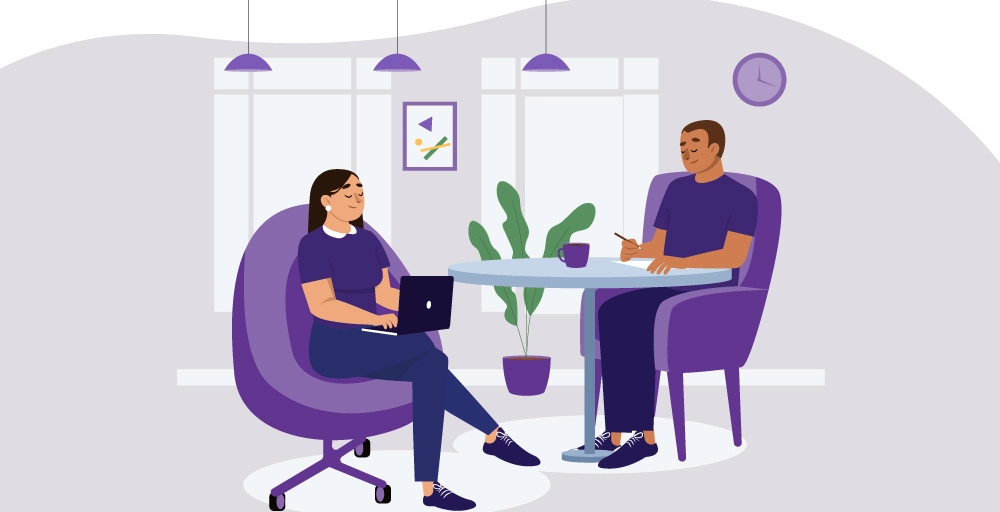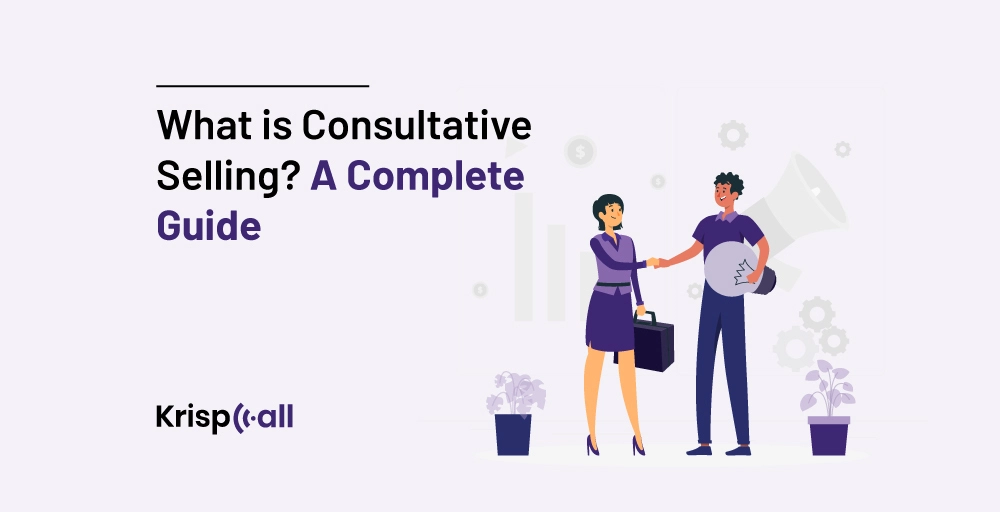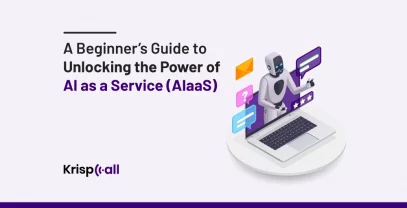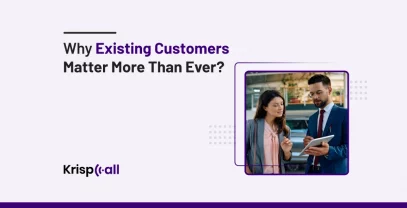Consultative selling is the #1 sales strategy. It helps salespeople learn about their clients’ issues in depth and, in turn, provides a solution that converts prospects into long-term customers.
In fact, 89% of customers buy from Amazon because they trust Amazon more than other sellers.
But, what exactly is consultative selling, and what are its benefits, challenges, rules, factors, and process 🤔? In this blog, you’ll learn consultative selling in detail.
Let’s get into it. 👇
🔑 30 Sec Summary
- Consultative selling is about understanding customers’ challenges and needs in depth to find solutions.
- The benefits of consultative selling include creating long-term relationships, solving customer problems, providing tailored solutions, and building trust as an advisor.
- Challenges of consultative selling are not asking the right questions, being too conversational, and failing to challenge clients when needed.
- Golden rules include researching clients, asking questions, listening actively, being authentic, asking for feedback, and being patient and following up.
- Measuring KPIs like question-asking, meeting length, satisfaction, and repeat business can show the effectiveness of consultative selling strategies.
What is consultative selling?
Consultative selling is a strategy that concentrates on understanding and resolving the unique wants and needs of the clients instead of just promoting a product. It uses good back-and-forth conversation to understand their challenges and how you can help.

At first glance, the phrase “consultative selling” seems to suggest helping customers by answering their questions. But really, it’s about digging deeper into what customers want and finding ways to solve their issues.
Many people misunderstand consultative selling as just replying to customers’ questions. But the consultation part actually explores what customers really need and different options for handling their problems.
It isn’t just responding to questions but actively discovering what’s important to customers and potential solutions. The focus is discovering needs and examining resolutions, not merely replying when asked. So, consultative selling means a lot more investigation than most people realize.
Example of consultative selling
You may think consultative selling is only for professional sellers, but you’ve probably experienced it without realizing it. Many people use this technique without calling it anything special. They care about their jobs and want to help customers in the best way possible.
For example, David Brock talks about going grocery shopping with his wife. The butcher at the meat counter takes time to find out what cuts they need based on what the meat will be used for.
You see it often when buying wine, coffee, or other specialty items. Not all sellers do as great a job as the butcher, but the really good ones go the extra mile, ensuring you get the perfect product for your needs. They want to sell you something you’ll benefit from, not just make a quick sale. Even if they’re not “officially” using consultative selling techniques, the results are the same – happy returning customers.
What are the benefits of consultative selling?
By consulting and helping prospective customers, consultative selling provides the following benefits:
- Create long-term relationships: Consultative selling creates strong, lasting customer bonds. It turns potential one-time buyers into regular, returning customers. This loyalty often means more sales later on.
- Solve problems: Instead of chasing short-term sales, consultative sellers focus on solving customers’ issues for the long haul. Sales teams help customers by considering solutions for their problems, not just immediate deals.
- Provide solutions: Today’s shoppers don’t want to be told what to get. They prefer partnering with people who can answer their business needs and goals.
- Give advice: Consultative sellers help business owners learn new things that could help them. They act as trusted advisors to whom customers come back again and again. They combine their expertise to create solutions that fit customer’s needs.
- Build trust: Consultative selling works best when looking for ongoing future sales rather than one-off purchases. It creates trusting relationships that keep customers coming back to you long-term.
What are the challenges of consultative selling?
Consultative selling can sometimes be hard to execute. Some challenges of consultative selling are:
- Not asking the right questions: Good sellers know to ask questions that require more than a simple yes or no. Too many questions that can be answered with just yes or no can feel like an interrogation, and they don’t reveal what clients really want.
- Being too conversational: In sales, you need to understand different personalities. Some clients are chatty and talk about random things like sports or food before, during, and after business talk. While those kinds of clients can be fun, too much chatting won’t get new customers.
- Customer-driven conversation: Savvy sellers know how to give clients time to talk. But you don’t want clients to control the whole chat fully. It takes skill to balance letting them share while also guiding things. Good consultative sellers get that if customers could fix their issues and find answers, they wouldn’t need your help.
- Failure to challenge the client: For many sellers, challenging the client goes against what they think sales are about. But you can’t always say yes as an expert to help. Customers may miss out on better options if you agree with everything without offering a different view.
8 golden rules of mastering consultative selling
Mastering consultative selling requires hard work because selling is definitely not easy. Here are 8 rules of mastering consultative selling:
1. Research
Part of consultative selling means doing your homework on clients before meeting them. Look them up on social media, read articles they wrote, or search for them online. This research can:
- Based on their work, figure out if they’d want what you offer and how your product could help their business.
- Know if they can make buying decisions or if you need to talk to someone else instead.
- Learning about clients will give you starting points for discussions. These chats will focus on understanding clients, not just sales pitches.
- Back up your conversations by showing custom statistics and examples fitting their situation precisely.
- Find what other options they may be considering so you know how your product compares and fits their needs better.
Doing research arms you with insights to guide consultative conversations. It shows clients you took time to personalize the meeting around them and their company’s priorities.
2. Ask Questions
Knowing what clients want is vital in consultative selling. However, the only way to start understanding is by asking good questions. Before meeting with someone, make a list of general starter questions you can use. Also, be ready to think on your feet and ask for customized follow-ups based on what they say.
Remember, clients are busy, so choose questions carefully and tailor them to your product or service, too. Ask “empathetic” questions to show you care about their situation. Ask “investigative” ones to learn more. Avoid “trap” questions that box you in, like “Are you happy with this?”
Instead, questions should demonstrate an interest in getting to know the client. Find out their goals and why wanting solutions now. Things like “How does this impact your company?” “What’s in the way of your goals?” and “What isn’t working with your current solution?”
3. Practice Active Listening
Most people don’t naturally listen well. We hear words but don’t deeply understand their meaning. This makes it hard to remember what was said and match products to client needs for consultative selling.
Active listening is a key skill for new sellers. Research shows that top sellers spend more time listening than speaking. To improve at it, focus on the ideas behind speech, not just the words.
Specifically, stay quiet and focus totally on the other person without interrupting. Wait till they finish to respond thoughtfully. Give time to think about what was said. We hate silence, so we don’t fully grasp meaning before wanting to respond. Take moments to consider another’s perspective.
4. Be Authentic
To sell high-priced items using a consultative method, clients must trust you. Building trust requires being fully honest and genuine with customers.
First, just act like your true professional self. Don’t swear or share views that could upset people. But do be you. Also, admit when your product doesn’t work for the client. Telling the truth is always best since misleading helps no one.
If you can show realness and honesty, you’ll get more deals and less stress. Not having to pretend constantly is less tiring. Faking takes effort with small rewards.
5. Ask for Feedback
During sales, consistently check if clients grasp your concepts and offers. Ask what they think to keep them engaged. This gives you chances to fix issues and misunderstandings as soon as possible. Asking for feedback lets clients share concerns in real-time.
It also shows clients you care about their perspectives. Continually gaining insights from customers helps tailor pitches better. Questions like “Does this make sense?” or “What are your thoughts on this solution?” are great ways to solicit responses.
Hearing replies immediately aids clarity and allows for addressing doubts promptly. The feedback loop keeps discussions two-way. Consultative selling relies on understanding prospects fully—and the best path is welcoming their input along the journey.
6. Be Patient and Follow up
Most sales, especially costly ones, don’t end after only one chat. Understand that clients need time to make a decision. Be cool with ongoing discussions before decisions happen. Going back and forth is normal before agreeing to a big purchase.
Research shows that, on average, five follow-ups are needed to finish a sale. And that’s an average—some take more. Higher-ticket items mean more follow-up attempts before sealing the deal.
Stick with it and keep in touch regularly with updates, reminders, and answers to new questions. Consultative selling is about building long-term relationships, not just one meeting. Patience and consistent support improve your chances of eventual success.
7. Dont Make Things Up
Making stuff up is the biggest mistake sellers commonly make. We sometimes act like experts who know everything to impress clients. But there’s a difference between knowledge and wisdom.
Knowledge is facts you memorize. Wisdom is how to apply knowledge properly. Therefore, don’t say things unless you’re sure they’re true. Customers will notice right away if you’re faking it.
It’s better to admit what you don’t know than to wing it. Clients will respect honesty over performance. Consulting means genuinely understanding their situation, which is too complex to pretend your way through. Trust relies on truthfulness. So, only share what you’ve checked is accurate information.
8. Dont Underestimate Your Customer’s Knowledge
Sellers sometimes think clients know little and try to speed through pitches to finish deals. But in this internet age, it’s easy for customers to research and learn.
Don’t underestimate what prospects understand about their problems and options. With one search, they can become experts too. Thinking customers are clueless can hurt your bond with them. It risks missing key facts and customizing solutions properly.’
To succeed at consultative selling, treat people respectfully while realizing they may know their situations deeply. Give clients the credit they deserve for taking the time to become informed.
Go into every conversation believing the other side already understands plenty—consultative means seeing eye to eye through empathy, not superiority.
Top 3 factors for advanced consultative selling
Consultative selling focuses on building relationships and sharing ideas to find special help for each customer. Its priority is learning all about the client instead of solely pitching products.
There are three big things to keep in mind when using this method:
1. Education
An education strategy aims to build trust so clients see you as the go-to when ready. It shows you as a specialist focused on enhancing their situation and empowering wiser choices.
When people feel heard, they see you as the caring authority. They’ll listen to your guidance more. Educating without selling hard shows care for the person, not just money. Clients value relationships where the focus is on understanding needs, not just making profits.
2. Collaboration
Not many want to be straight-up sold to or pitched at. Most would rather share what they know and ask questions, too. This doesn’t mean you shouldn’t be the expert. It means having more than just knowledge of your product. Adapt how you chat based on what helps each person.
Ask in a way that gets them involved. Listen to their situation. Come up with solutions that fit them based on what they tell you. Share your smarts without forcing a deal. Give time to talk more. Being a specialist means leading discussions where clients feel respected and join in. It’s about understanding together, not one-way speeches.
3. Persuasion
Guiding talks isn’t enough. You must also lead toward action. Acknowledge client’s worries and truly understand how they feel. Put the client as the hero of their situation. Highlight how a solution helps them personally based on goals. Explain how planning in advance protects them when it counts.
Consultative sales isn’t challenging if you care for the customer as the central part. Focus on teaching, teamwork, and gently convincing through empathy and understanding. That builds faith and relationships, ending in answers that solve problems.
What is the consultative selling process?
The consultative selling process is identified in the following steps such as:
Step 1: Identify your Leads
Whether you get most of your leads from people contacting you (inbound) or from people you contact yourself (outbound), research is an essential first step in starting the consultative sales process.
First, see if these new leads match the successful customer you’re looking for. Do they fit your criteria? It’s also good to try to understand the customer. The more you talk to customers, the easier this will be. Try to learn about their business, how they see things, and what motivates them.
But salespeople can only do a good job if they have the right tools to research customers well and really learn which types usually end up buying. Companies must regularly give salespeople good information and updates to help them be consultative.
Step 2: Explore Deeper
A good doctor doesn’t just believe what you say right away. They’ll ask you more questions until they know the real problem, not just what it seems like on the outside.
This is what consultative sellers need to do, too. Don’t take what customers say as the whole truth. Dig deeper by asking questions. Understand the real root of the problem, not just the surface-level issue.
Here are two ways to do it:
Ask questions that aren’t yes or no: “Tell me more about…” or “Can you explain your process for…” or “How does that affect your team?”
Ask follow-up questions: “Why is that so important in particular?” or “Do you have an example for me?” or “What does that look like with numbers (metrics)?”
Step 3: Understand and Develop Solution
The consultative sales process is about helping customers succeed for a long time, not just making one sale.
Revenue Operations expert Marc Belgrave explained it well: “In sales, people think you can sell anything to anyone. But that’s not true – you must understand what people need.”
A consultative seller is like another member of the customer’s team. They help customers set up the right way and process to do well. The seller needs to understand and develop a solution for the customer to succeed long after the sale is made.
Step 4: Present Solution and Follow Up
Customers are knowledgeable and make their choices while also negotiating. Before this stage, good salespeople would have already talked to the people in charge of buying (procurement).
You should know the exact steps the customer’s company needs to buy your product or service. Knowing this is important when making a plan with dates and following up.
Understand how the customer buys things. Also, make sure the solution you suggested works for your contact person. By getting your contact person to agree to the timeline, your next steps will be clearer, and following up with them will be easier.
Step 5: Negotiate and Close
Customers are likely to make their purchase after following up. Salespeople help install the product or service and follow up afterward. Ensuring the customer feels supported is even more critical when a sale is almost finished.
You don’t want to lose a deal that’s almost done just because you focused on someone else who’s not as close to buying. Check on customers who are near the end regularly. Ask if they have any questions or concerns. And get ahead of any potential issues that could come up.
If a customer says their manager agreed but is slow to sign, ask if it’s okay for you to contact the manager directly to answer questions or give a gentle reminder. It’s very important to back up your customer during this stage.
Step 6: Execute, Evaluate Results, and Expand
An actual consultative sales process doesn’t end when the contract is signed. It ends when customers feel like they’re getting real benefits from what they bought.
Eventually, the salesperson will pass the new customer on to someone else, such as a customer success rep. But first, the salesperson should still be in charge for a while to make sure customers are happy with their purchase.
As a consultative seller, you have already built a relationship with the customer. You have talked a lot about their business and needs. You have helped design how to use the product for them. Now, help them cross the finish line—assist them in putting into practice the plans you discussed for their daily work.
Wrapping Up!
Consultative selling builds customer trust, as sellers aim to provide a genuine solution rather than just sell their product. Sellers go above and beyond to understand their customers’ issues and solely focus on delivering a solution that benefits customers rather than just generating sales.
This way, customers trust them more and are likely to contact them in the future if any similar issues arise. Consultative selling plays a vital role in converting prospects into long-lasting, loyal customers.
FAQs
What is the difference between consultative selling and product-based selling?
The difference between consultative and product-based selling is that in a consultative sales process, the main thing is the problem your product helps solve for the customer (even if only partly in most cases). However, in a product-based sales process, the most important thing is the product itself—what it can do and its features.
How can salespeople improve their consultative selling skills?
Salespeople can improve their consultative selling skills by avoiding being all about selling and focusing more on the customer. Customers want salespeople to be real and lead the discussion with a plan to keep things organized.
How can sales professionals learn and develop consultative selling skills?
Sales professionals can learn and develop consultative selling skills by doing the following:
- Ask good questions: The main goal when being consultative is helping customers find answers to their challenges.
- Listen attentively: You need to understand what’s going on with their business before giving advice.
- Educate: Teach the customer new things they might not have previously known.
- Be authentic: When selling this way, don’t just try to make a sale. Learn about the customer’s situation and suggest ideas to help them improve.
How can businesses measure the success of their consultative selling efforts?
Businesses can measure the success of their consultative selling efforts by tracking key details and numbers. These “key performance indicators (KPIs)” and “metrics” give good insights into how your business is doing and whether the consultative sales methods are effective.
Things like the number of questions you ask customers, the length of your meetings, and customer satisfaction scores can help you determine whether focusing on truly understanding the customer and their needs is leading to more sales success over time.





